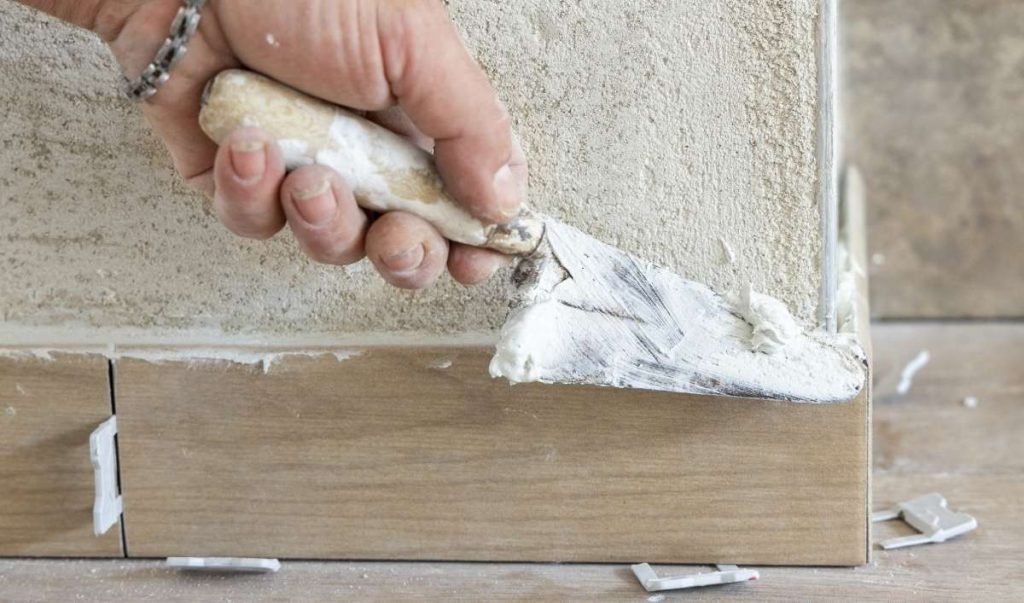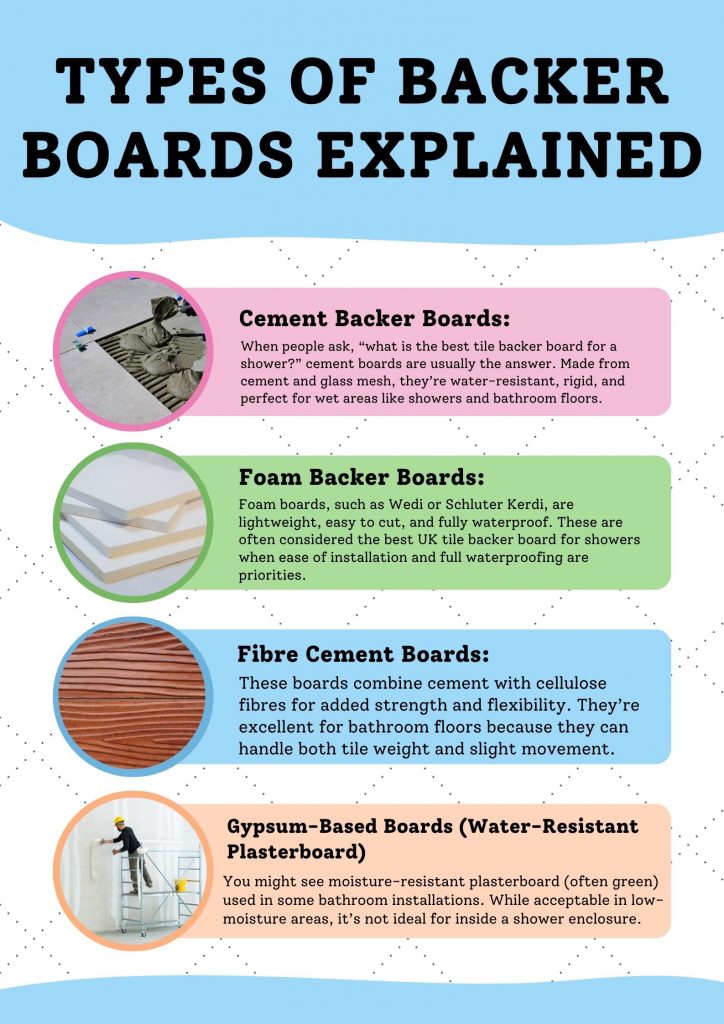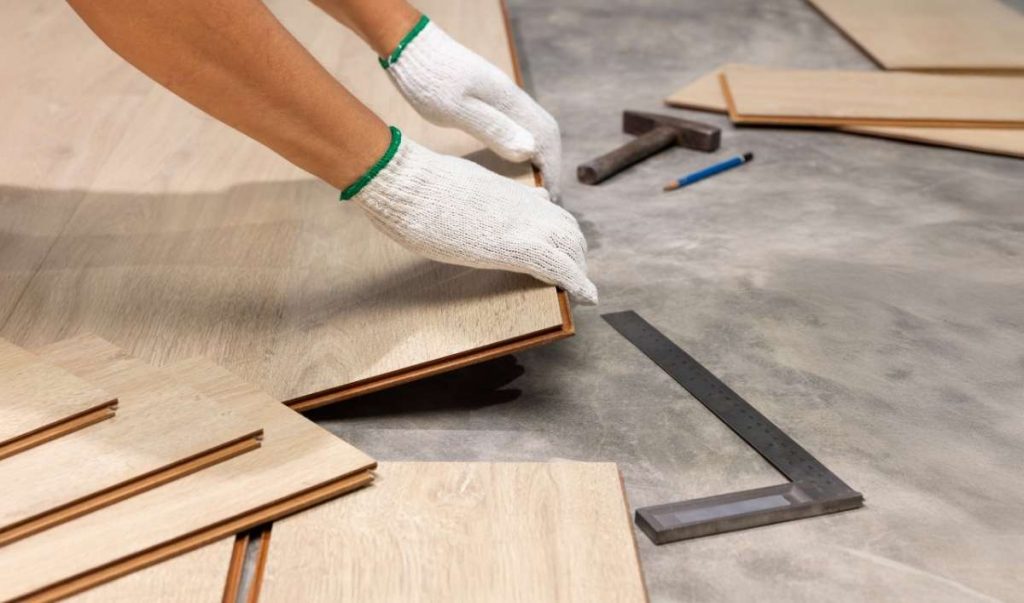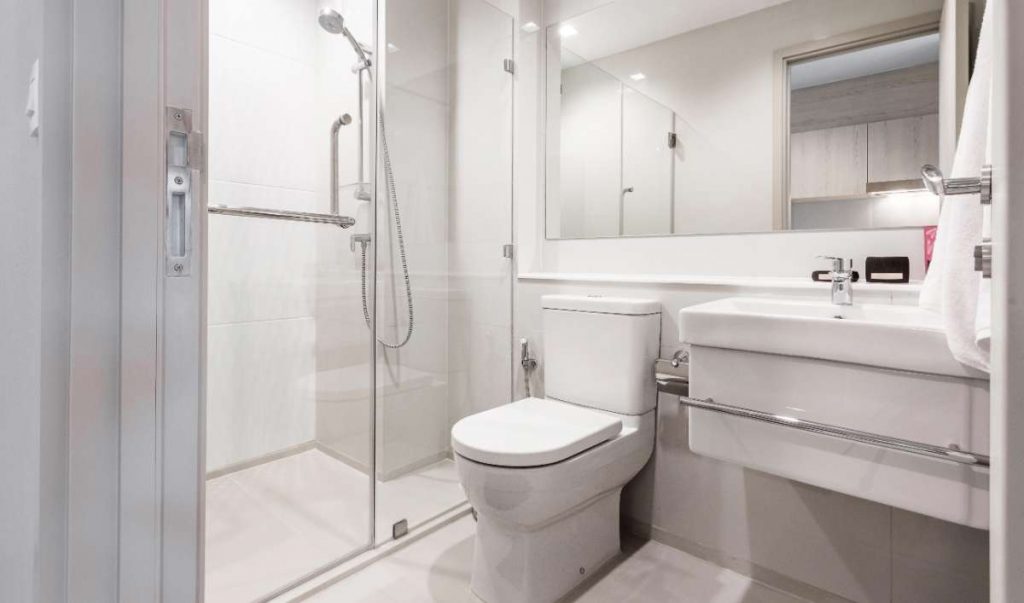Have you ever wondered why some tiled bathrooms last for decades while others start cracking or leaking within a year? The secret often lies beneath the tiles, in the backer board. Choosing the best backer board for bathroom tile is one of the most important steps to ensuring your tiles stay secure, waterproof, and flawless for years.
Whether you’re renovating a flat in Islington, refreshing a townhouse in Camden, or upgrading a bathroom in Hackney, understanding which backer board to use can make all the difference. In this guide, we’ll break down your options, explain the pros and cons, and help you decide what’s best for your walls and floors. Read on to learn more.
Why Backer Boards Matter
Tiles might get all the glory, but the surface behind them does the heavy lifting. Backer boards provide a stable, waterproof, and long-lasting base for your tiles something regular plaster or drywall can’t do. If you’re tiling over drywall, you might be tempted to skip the upgrade, but let’s be clear: tile on drywall vs backer board isn’t a fair fight.

Drywall absorbs moisture, warps, and loses adhesion over time, especially in steamy bathrooms. Backer boards, on the other hand, are built to resist moisture, prevent movement, and support heavy tiles. In short, if you want your tiles to stay put and your walls to stay dry, start with the right backer board.
Types of Backer Boards Explained
Let’s look at the most common types available in the UK and how they perform.

1. Cement Backer Boards:
When people ask, “what is the best tile backer board for a shower?” cement boards are usually the answer. Made from cement and glass mesh, they’re water-resistant, rigid, and perfect for wet areas like showers and bathroom floors.
Pros:
- Highly moisture-resistant
- Excellent for walls and floors
- Compatible with underfloor heating
- Long lifespan
Cons:
- Heavier than other options
- Needs sealing on joints
Popular choices include brands like HardieBacker and NoMorePly, both widely used across London renovation projects.
2. Foam Backer Boards:
Foam boards, such as Wedi or Schluter Kerdi, are lightweight, easy to cut, and fully waterproof. These are often considered the best UK tile backer board for showers when ease of installation and full waterproofing are priorities.
Pros:
- 100% waterproof
- Lightweight and easy to handle
- Adds slight insulation
- Ideal for shower walls and niches
Cons:
- More expensive than cement boards
- Can dent if not handled carefully before tiling
Foam boards are a favourite in modern Camden and Islington bathrooms where homeowners want sleek, minimal finishes without worrying about dampness behind the tiles.
3. Fibre Cement Boards:
These boards combine cement with cellulose fibres for added strength and flexibility. They’re excellent for bathroom floors because they can handle both tile weight and slight movement.

Pros:
- Good balance of strength and flexibility
- Moisture-resistant
- Ideal for both floors and walls
Cons:
- Needs sealing at joints
- Slightly pricier than basic cement boards
If you’re deciding on the best backer board for floor tile, fibre cement boards are a strong contender, especially for older London properties with timber subfloors.
4. Gypsum-Based Boards (Water-Resistant Plasterboard)
You might see moisture-resistant plasterboard (often green) used in some bathroom installations. While acceptable in low-moisture areas, it’s not ideal for inside a shower enclosure.
Pros:
- Easy to install and cost-effective
- Works well in half-tiled or low-moisture areas
Cons:
- Not waterproof; only moisture-resistant
- Should never be used behind shower tiles
If you’re wondering if you can tile directly onto plasterboard, the answer is yes, but only if it’s moisture-resistant and not exposed to direct water.
What’s the Best Backer Board for Floors?
Floors face more stress than walls from foot traffic to heavy fittings, so they need a strong, rigid board that won’t flex. The best backer board for floor tile is usually cement or fibre cement board.

Here’s why:
- They don’t expand or contract with heat changes.
- They support the weight of tiles and furniture.
- They prevent cracks in grout and tile joints.
Foam boards can also be used if properly supported, but cement boards remain the gold standard for bathrooms with underfloor heating or heavy use.
Waterproofing: The Key to Long-Term Success
Even the best board won’t help if water finds its way behind it. Before you tile, always waterproof your surface. If you’re wondering how to waterproof a shower wall before tiling, follow this simple process:
- Apply a liquid tanking membrane over the surface.
- Reinforce corners and joints with waterproof tape.
- Let it dry fully before applying adhesive and tiles.
And if you’re using plasterboard, make sure you know how to waterproof plasterboard before tiling; otherwise, moisture will eventually break it down.
Pro Tips for Choosing the Right Backer Board
Choosing can be tricky, so here’s how to narrow it down:
- For shower enclosures: Use foam or cement boards for full waterproofing.
- For bathroom floors: Cement or fibre cement boards are ideal.
- For walls outside wet zones: Water-resistant plasterboard may be fine.
- Avoid standard drywall: It simply won’t last in wet areas.
Pro tip: Always use flexible adhesive and waterproof grout to allow slight movement without cracking.
Don’t Make These Waterproofing Mistakes
Even a small misstep can ruin your tiling project. Watch out for these common errors:
- Using ordinary plasterboard inside a shower.
- Forgetting to seal joints between boards.
- Skipping the waterproofing layer.
- Laying tiles before the adhesive or tanking has fully dried.
- Mixing board types on one wall, consistency is key.
Professionals like AnimAnimus Construction never cut corners on these steps and that’s why their bathrooms stand the test of time.
AnimAnimus: Your Local Bathroom Specialists
At AnimAnimus Construction, every bathroom project starts with strong foundations; literally. Our experienced bathroom fitters and bathroom contractors carefully select and install the right backer board based on your space, moisture levels, and tile type.

Here’s what sets us apart:
- Tailored solutions: Every wall and floor is assessed before installation.
- Premium materials: We use only high-quality, waterproof boards.
- Precision work: Every joint is sealed, every edge aligned.
- End-to-end care: From design to final polish, we handle it all.
Whether you’re in Hackney, Camden, or Islington, our expert team ensures your bathroom renovation is as durable as it is beautiful.
FAQs
Question 1. What is the best backer board for bathroom tile?
Answer: Cement and foam boards are the top choices; they’re durable, waterproof, and designed for wet areas.
Question 2. Can I use drywall instead of a backer board?
Answer: No, drywall absorbs moisture and breaks down over time. Always use moisture-resistant or cement-based boards.
Conclusion:
So, what is the best backer board for bathroom walls and floors? The answer depends on where it’s going: cement or foam boards for showers, fibre cement for floors, and moisture-resistant plasterboard for dry areas. Whichever you choose, preparation and waterproofing are everything.
And if you’d rather leave it to the experts, AnimAnimus Construction can take care of it all from backer board installation to final tiling. Ready to upgrade your bathroom in Islington, Camden, or Hackney? Contact us today and start your bathroom transformation with confidence.
